USMC Buying Nearly 2,000 Tamir Interceptors For Its Iron Dome Systems
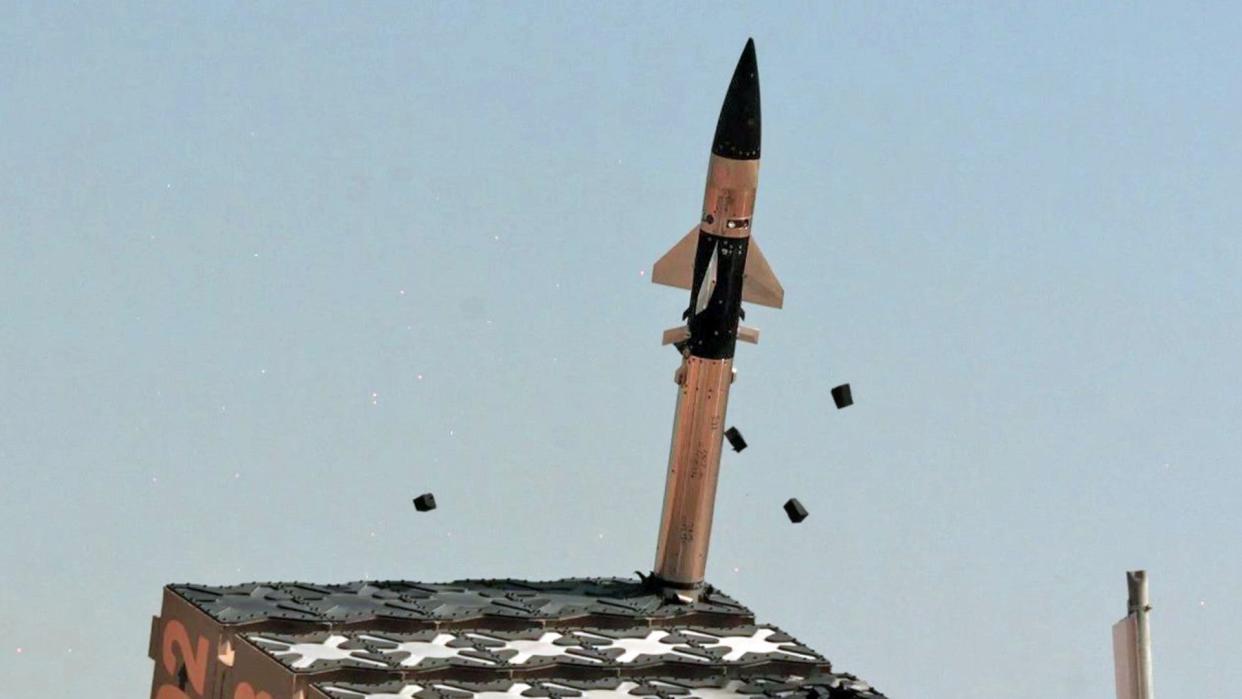
The U.S. Marine Corps has laid out plans to acquire three batteries worth of Iron Dome systems, including 44 launchers and 1,840 Tamir interceptors. The exact estimated value of this purchase is unknown, but based on publicly available figures the cost of the Tamirs alone could be close to $200 million. The Marines say they want Iron Dome systems primarily to help protect units from cruise missiles, but these systems can also provide defense against drones and rockets and other artillery rounds.
The new details about the Marine Corps Iron Dome plans were posted yesterday on the U.S. government's System for Award Management (SAM) contracting website as part of a notice about future potential sole-source deals with Raytheon. The Irom Dome's manufacturer, Israel's Rafael, has a partnership with Raytheon to offer the system in the United States, where it is sometimes also referred to as SkyHunter. The Marine Corps has been actively working toward acquiring a service-specific Iron Dome system, which it refers to as the Medium Range Intercept Capability (MRIC), since 2020.
https://www.youtube.com/watch?v=Wz_gkX-bkmE
According to yesterday's contracting notice, the Marines are currently planning to buy "three Batteries of MRIC systems, consisting of 1,840 Tamir missiles, 44 Expeditionary launchers integrated with Iron Dome Missile Firing Unit Launch Control Electronics (LCE), 11 mini-Battle Management and Control (mBMC) systems with uplinks compatible with the LCE and integrated with expeditionary Command and Control (C2) (i.e., the Processing and Display Subsystem (PDS) from the USMC Common Aviation Command and Control System (CAC2S)."
The Marines are also looking to purchase "80 Tamir missiles to support the initial MRIC Prototype deployment" and associated "logistics and technical support" for all of these systems.
The Corps currently has a prototype MRIC system, "consisting of expeditionary C2 (i.e., the PDS from the CAC2S and a mBMC), four MRIC Expeditionary Launchers (MEL), and Tamir missiles."
The MRIC Expeditionary Launcher, at least prototype examples the Marine Corps has publicly shown so far, consists of a trailer-mounted variant or derivative of the standard palletized Iron Dome launcher. A single launcher can be loaded with up to 20 Tamir interceptors, which come preloaded in individual canisters, at a time.
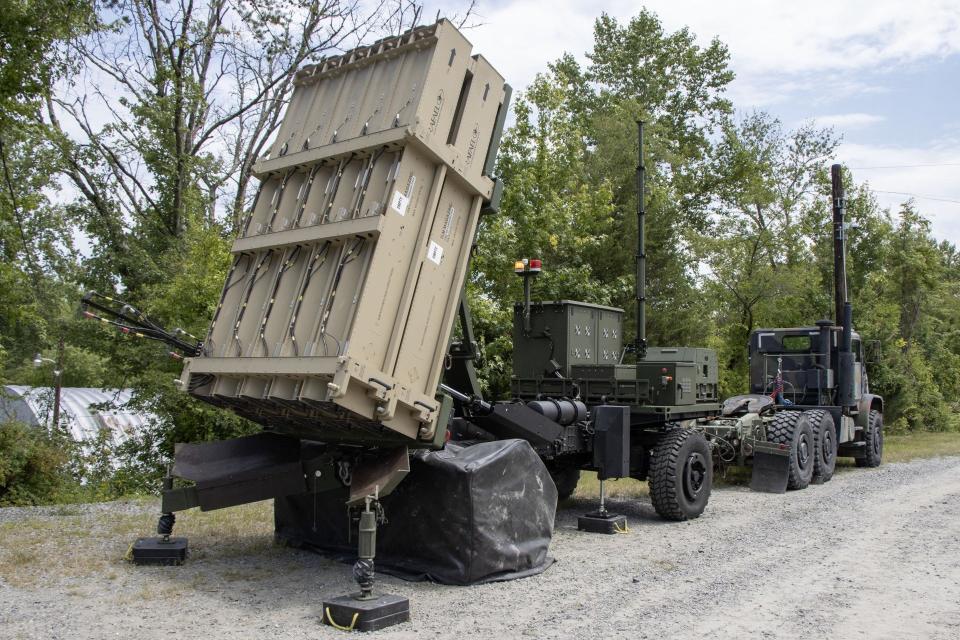
Each Tamir missile features an active radar seeker and a two-way datalink that allows it to receive updated targeting data via Iron Dome's battle management and control unit to further improve its accuracy. The highly maneuverable interceptors use ring-shaped high-explosive blast-fragmentation warheads with laser proximity fuzes to destroy their targets. You can learn more about Tamir and its capabilities in detail here.
The reported unit costs for Tamir vary widely from source to source, but this figure is understood to be somewhere between $40,000 and $100,000. This is very cheap compared to many other surface-to-air missiles, even ones specifically designed to be low-cost.
Iron Dome was originally designed to counter a group of threats typically referred to as rockets, artillery, and mortars (RAM), but has also demonstrated capabilities against drones and cruise missiles.
https://twitter.com/IDF/status/1392184942801653775
As of June, the Marine Corps said it had conducted two successful live-fire tests of its prototype MRIC system against mock targets representing cruise missile threats.
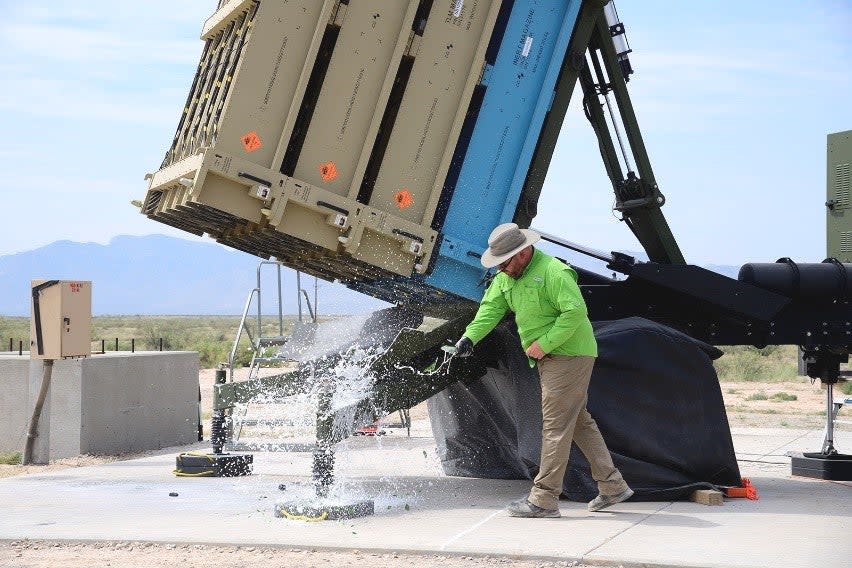
"MRIC will defend... sites primarily against subsonic/supersonic Cruise Missiles (CM)" and "secondarily against other aerial threats that enter into its engagement zone," according to the Marine Corps' 2022 Aviation Plan. Together with other systems, it will help provide "a complementary defense in depth" and "be interoperable with joint service IAMD [integrated air and missile defense] capabilities, providing CM defeat not just to Marine Corps units but also the naval and joint force."
In addition, Iron Dome systems typically have an associated radar to first spot and track threats and then cue the Tamir interceptors. The Marine Corps has said in the past that it will pair MRIC with its existing AN/TPS-80 Ground/Air Task Oriented Radar (G/ATOR).
https://www.youtube.com/watch?v=1db1W60_JeU
"The MRIC system will leverage available surveillance radar and communication assets within the AO [area of operations] to enhance detection and identification of threats and improve situational awareness," the contracting notice posted online yesterday also notes. It is interesting to note here that the U.S. Army canceled its own plans to acquire Iron Dome systems in 2020, citing issues with integrating them with the rest of its air and missile defense architecture and cybersecurity concerns.
Still, tied to a robust command and control architecture, MRIC could make use of a number of air radars and other sensors in Marine service, as well as those belonging to other branches of the U.S. military or even ally or partner forces during future operations.
At an event at Marine Corps Base Quantico, Virginia, in July, the Corps did display a Humvee equipped with an Enhanced & Extended Multi-Mission Hemispheric Radar (exMHR) system from Leonardo DRS, along with an MRIC Expeditionary Launcher. The pulse-doppler S-band exMHR is a "multi-mission radar for Counter-UAS, Very Short-Range Air Defense (VSHORAD), Counter Rocket, Artillery and Mortar (C-RAM), Fire Control, and Hemispheric Surveillance operational missions," according to the manufacturer, and would seem well-suited to being paired with the MRIC system.

Short-range air defense systems mounted on 4x4 Joint Light Tactical Vehicles (JLTV) and 4x4 MRZR all-terrain vehicle-based country-drone systems were also on display at the Quantico event last month. These, together with MRIC, are components of a broader Marine Corps effort to expand the scale and scope of its air defense capabilities in support of its new expeditionary and distributed concepts of operations.
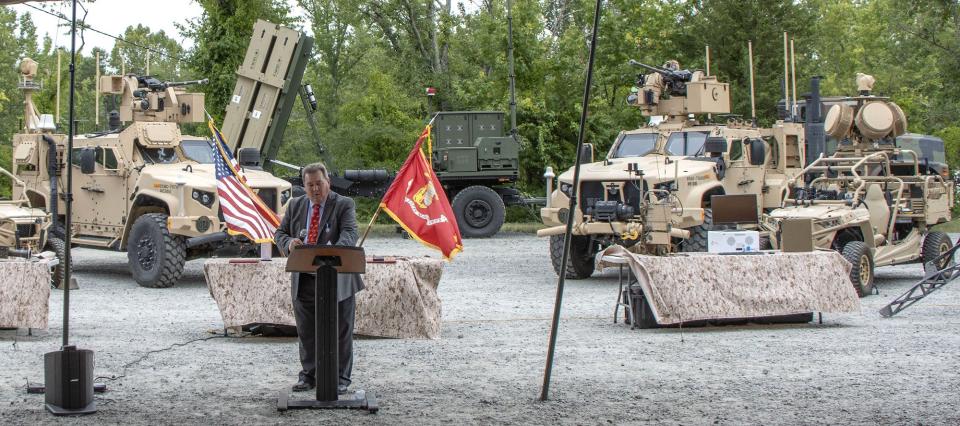
Systems using the Stinger heat-seeking surface-to-air missile, including shoulder-fired man-portable air defense system (MANPADS) types, which currently form the core of the Marine Corps' organic air defense capabilities, are set to remain in service for the foreseeable future.
https://www.youtube.com/watch?v=xEnqKlDqg5k
It is no secret that the U.S. military is concerned about the threats posed by cruise missiles. Potential near-peer adversaries like China and Russia, as well as malign regional actors like Iran and North Korea, are developing and fielding increasingly more capable types of land-attack and anti-ship cruise missiles, and helping to proliferate these capabilities, even to non-state actors.
The Marine Corps is not alone in seeking new ground-based capabilities to defend against them, either. Though the Army is no longer planning to buy Iron Dome, it is acquiring an extremely similar system called Enduring Shield that will be able to fire AIM-9X Sidewinder missiles at first and other types of interceptors in the future. The U.S. Air Force is also looking to expand its ability to defend bases against cruise missile strikes, including with novel options like large-caliber self-propelled guns firing high-velocity projectiles.
https://www.youtube.com/watch?v=egM7ojN2N34
For the Marines, a road-mobile and readily deployable Iron Dome system also offers valuable additional defensive capability against drones, another steadily growing threat, as well as incoming rockets and other artillery rounds. The line between cruise missiles and uncrewed aerial systems is also steadily blurring thanks to kamikaze drones.
The Corps' new expeditionary and distributed concepts of operations center heavily on rapidly deploying to forward locations, and being able to just as quickly relocate, all within areas that are expected to be within reach of various enemy stand-off weapons.
Being able to move from one location to another in unpredictable ways is intended to help mitigate risk by making Marine units by upending the ability of opponents to easily find, fix, and destroy targets at long distances. However, these future operations still look set to demand multiple tiers of deployable air and missile defenses to help ensure success.
As it stands now, the Marine Corps' plan to acquire three full batteries of MRIC systems is based on the idea of assigning one of them to each of the three Marine Littoral Regiments (MLR) it is in the process of establishing. The MLRs are the main forces expected to execute the service's new expeditionary and distributed operating concepts.
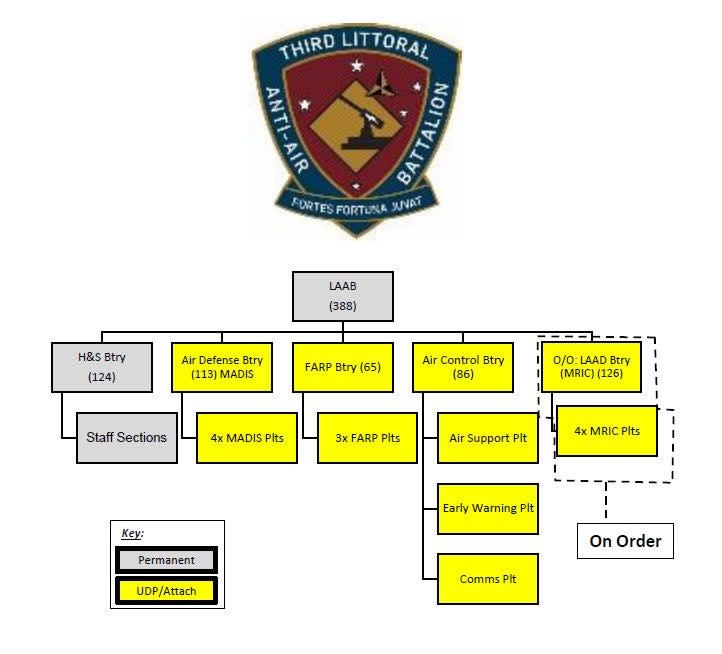
The Marine Corps hopes to achieve an early operational capability with MRIC using the prototype system it has now by Fiscal Year 2025. The goal is then to field one full MRIC battery in Fiscal Years 2026, 2027, and 2028. The service has not publicly laid out a detailed schedule for when it plans to acquire the accompanying arsenal of 1,840 Tamir interceptors.
The total size of the Marine Corps Iron Dome force could well grow further as time goes on in response to still-emerging threats and evolving U.S. military doctrine.
The Corps now looks set to have a robust Iron Dome capability that will expand the air and missile defense capabilities for its deployed units by the end of the decade.
Contact the author: joe@thedrive.com

